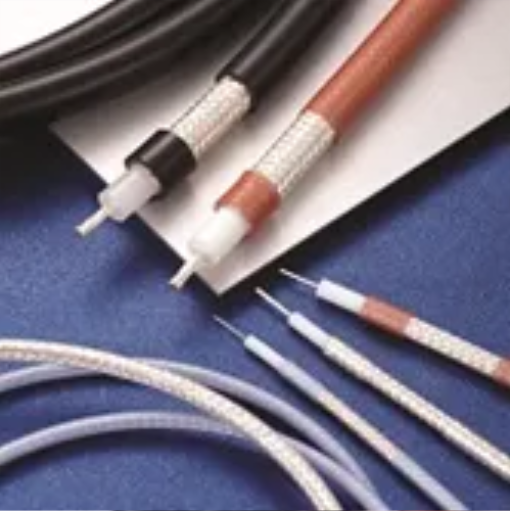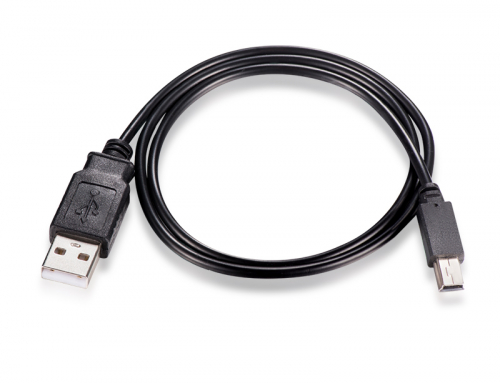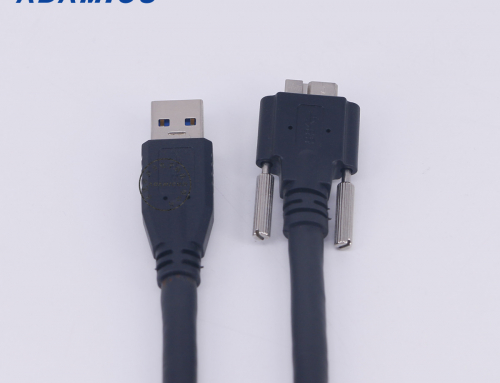Radio frequency cable, the full name of radio frequency coaxial cable, is a transmission cable widely used in fields such as radio communications, radar and television broadcasting. It consists of inner conductor, insulation layer, outer conductor and shielding layer, etc., and has good electrical and mechanical properties. In various electronic devices, RF cables are responsible for transmitting high-frequency signals to ensure signal stability and accuracy.
The main function of RF cables is to transmit high-frequency signals. Since high-frequency signals have higher frequencies and smaller wavelengths, they have high requirements for the electrical and material properties of the cables.The inner conductor of RF cables is usually made of conductive materials such as copper, aluminum or silver-plated copper, which has good conductivity and low resistance. The insulation layer uses materials with good insulation properties such as polyethylene and polytetrafluoroethylene to ensure signal transmission quality.The outer conductor is an important part of the RF cable. It is made of metal materials, such as copper, aluminum or silver-plated copper. The role of the outer conductor is to shield internal signals and prevent external electromagnetic interference from affecting signal transmission. In addition, the outer conductor can also play a role in supporting and protecting the inner conductor and insulation layer.The shielding layer is a key component of RF cables. It reduces the impact of electromagnetic interference on signal transmission through grounding. Shielding can take the form of metal braid, metal foil or wire braid. The structure of the shielding layer can effectively reduce loss and distortion during signal transmission, thereby improving signal transmission quality and stability.
Flexible coaxial cable
characteristic:
Flexible coaxial cable assemblies have small bending radius, good bending resistance, and high cost performance. They are suitable for high-density interconnection within modules, instruments, and systems.
typical application:
Mobile communications, radar equipment, military navigation, radio frequency component connections, antenna connections, etc.

Semi-flexible coaxial cable
Features:
Semi-flexible cable assemblies have good flexibility, semi-shaped capabilities, and do not require pre-forming processing. They are convenient and quick to install in terms of microwave interconnection between modules, system debugging, and product pre-research.
typical application:
Mobile communications, radar equipment, military navigation, radio frequency component connections, antenna connections, etc.;

Semi-steel coaxial cable
characteristic:
Semi-steel cable assemblies have the characteristics of good electromagnetic shielding performance, strong vibration resistance after forming, strong connection, and high reliability. They are widely used for microwave module interconnection and fixed connections inside the chassis.

Typical application scenarios:
RF module internal connections;
Internal connections of precision instruments;
Aviation products or connections between narrow holes;
Low loss amplitude and phase stable cable assembly
Features:
The relatively cheaper stable amplitude and phase VNA test cable is also the cable that most people currently use when testing. The general price is about one thousand yuan; this type of cable adopts a small-volume armored structure and is lighter in weight. , smaller bending radius and bending stress, suitable for engineering testing applications, easy and flexible to use, stable and cost-effective; the general frequency range of this type of line is DC-18G/26G/40G
Typical application scenarios:
Used in avionics and laboratory testing;
High performance stable amplitude and phase VNA test cable assembly
Features:
High-performance amplitude-stabilized and phase-stabilized VNA test cables. This type of cable is mainly a dedicated test cable for vector network analysis. It has extremely stable voltage standing wave ratio and insertion loss, excellent mechanical phase stability and connection repeatability. It has a firm and reliable mechanical structure, can withstand multiple external forces such as bending, squeezing and stretching, and maintains reliable stability. However, this type of wire is very expensive; the price of a treasure
Typical application scenarios:
Vector network analyzer test and calibration;
Laboratory use;
production use;
Main indicators of RF feeder
VSWR/return loss, characteristic impedance, shielding performance, (attenuation) insertion loss, propagation speed and electrical length, bending characteristics minimum turning radius;
1.1.2.1. VSWR/Return Loss and (Attenuation) Insertion Loss
VSWR/return loss and (attenuation) insertion loss can be obtained by testing S11 and S21 with a vector network analyzer;
1.1.2.2. Shielding performance
Single layer shielding braid RG58/RG316 and national standard SYV-50-7 shielding performance is about -50dB
Two-layer shielding RG223/RG142/RG214 shielding performance about -75dB—-85dB
Three-layer shielding, the shielding effect can reach -90——-100dB
Solid shielded cable is made of aluminum tube or copper tube, the shielding effect can reach -120dB eg: EZ141 semi-steel cable
1.1.2.6. Minimum turning radius of bending characteristics
Cable bending will cause changes in impedance, standing wave ratio VSWR, loss and phase; different types of cables have different bending radius requirements.
Generally, the first minimum turning radius should not be less than 5 times its diameter, and the second bending radius of semi-flexible coaxial lines and semi-rigid coaxial lines should not be less than the bending radius and should not be less than 10 times its diameter;
With the continuous development of science and technology, radio frequency cables are increasingly used in various fields, including wireless communications, broadcasting, aerospace, medical equipment, etc. The development trend of RF cables is to become smaller, lighter, and more flexible to adapt to different scenarios and needs. At the same time, the manufacturing process of RF cables is constantly improving to improve their performance, reliability and durability.





